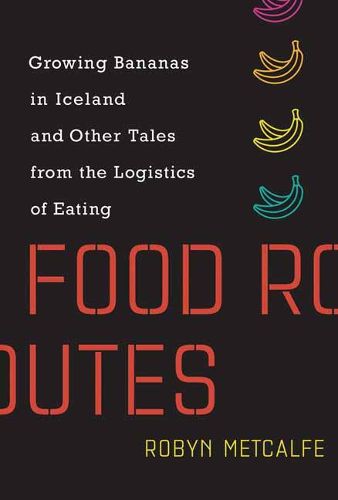Readings Newsletter
Become a Readings Member to make your shopping experience even easier.
Sign in or sign up for free!
You’re not far away from qualifying for FREE standard shipping within Australia
You’ve qualified for FREE standard shipping within Australia
The cart is loading…






Innovation opportunities on the path between farmer and table asks the question- How does food, local or imported, slow or fast, nutritious or unhealthy, industrial or small scale, get to our plate?
The global food supply chain is in the midst of a transformation, and that change is cause to re-imagine a future food system that actually may look very different from our traditional practice of delivering food from farms to tables. Increasingly, farmers are also engineers, crops are grown in enclosed vertical structures, and
clean meat
is raised in laboratories rather than on the range. Technology and Big Data are changing not only the who and the where, but how food gets our plates- food printers, lab dishes, or from personalized in-home farms. The possibilities and consequences of a smart, interconnected food system are only now becoming visible. No more invisible supply chains; the future food system will operate transparently and faster. By understanding the history, complexity, and potential of the global food supply chain, consumers, policy makers, and the food industry can shape the future of food.
$9.00 standard shipping within Australia
FREE standard shipping within Australia for orders over $100.00
Express & International shipping calculated at checkout
Innovation opportunities on the path between farmer and table asks the question- How does food, local or imported, slow or fast, nutritious or unhealthy, industrial or small scale, get to our plate?
The global food supply chain is in the midst of a transformation, and that change is cause to re-imagine a future food system that actually may look very different from our traditional practice of delivering food from farms to tables. Increasingly, farmers are also engineers, crops are grown in enclosed vertical structures, and
clean meat
is raised in laboratories rather than on the range. Technology and Big Data are changing not only the who and the where, but how food gets our plates- food printers, lab dishes, or from personalized in-home farms. The possibilities and consequences of a smart, interconnected food system are only now becoming visible. No more invisible supply chains; the future food system will operate transparently and faster. By understanding the history, complexity, and potential of the global food supply chain, consumers, policy makers, and the food industry can shape the future of food.